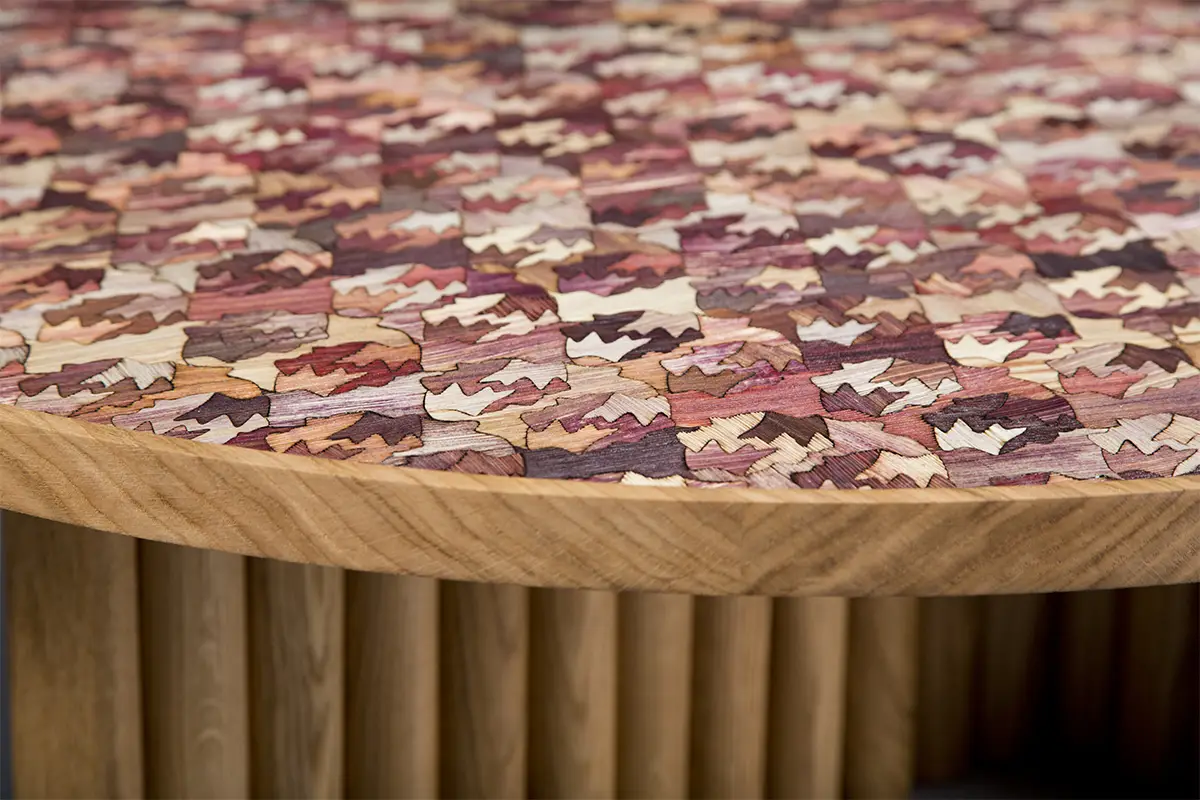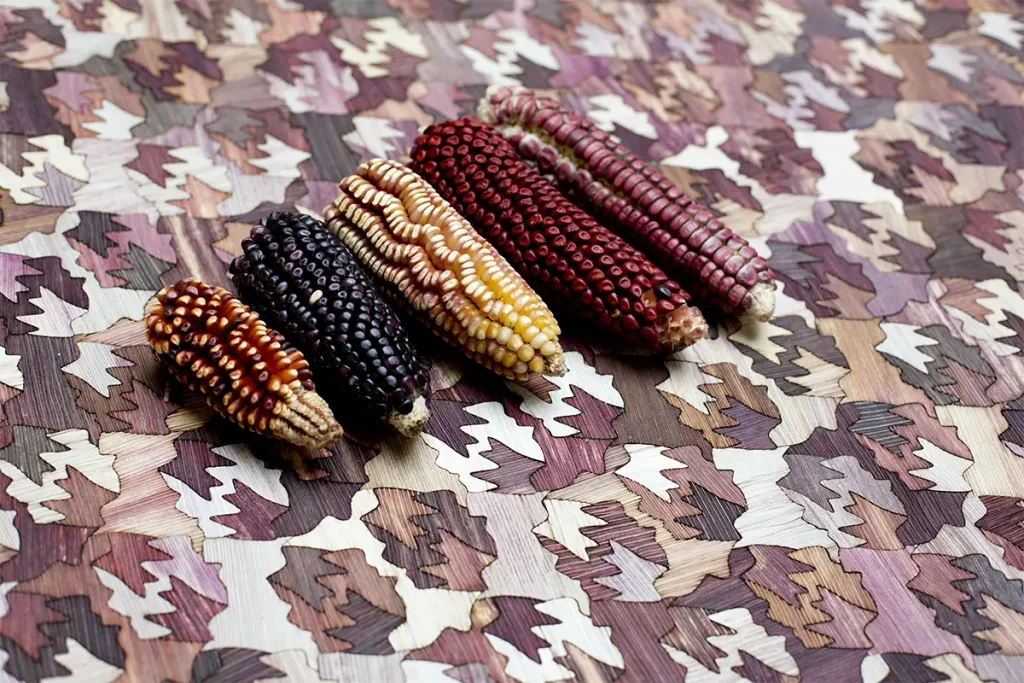Fernando Laposse: «designing is not just a matter of materials». When social justice, unemployment, climate change, mass migration and violence are at stake
Addressing the problems of deforestation and land corrosion in Mexico
One of the main causes of loss of forests in the Mexican environment is largely due to human activity, such as rural productive systems, which has accelerated the degradation of ecosystems and the loss of vegetation cover at an inordinate rate. According to the country’s National Forestry Commission (Conafor), twenty percent of the deforestation of the one-hundred and twelve hectares of forests lost in Mexican soil is attributable to expanded cultivation of crops including sugarcane, corn, soy, coffee and palm oil, and about three percent to the construction of infrastructure and development.
Latin America bases its production chain on craft based production with a closer proximity to the material and their sources.
Fernando Laposse: designing to deliver a message of social change
Fernando Laposse is a London based Mexican designer whose work focuses on environmental concerns through extensive research into the location of materials and their historical and cultural connotations. His work culminates into objects of ‘endemic design’ where materials and their historical and cultural ties to a particular location and its people take center stage. Mainly, moving past this latest obsession of compostable and biodegradable material to reflect purely on the material and the concerns it carries within itself: why are we having this crisis? Why are we having all of this waste to begin with? Why is this way of designing causing this crisis?
The UK—and the European system in general—is mostly focused on industrial production; independent makers still make up for a little percentage of the overall working industry. It created a cycle that has put most of the blame and the responsibility on consumers, but it’s more on the systems that are in play.
The global south’s problems are created by the west
«The conversation we need to start is about the problems carried by the polluters of the world. There’s a library of sustainable materials out there that we already know. What I try to do with my work is to attract attention to regulation, trade, and the lack of incentives or consequences».
Most of the problems in the Southern part of the world were created by the Western countries and the industrialized economy, including a major overflow of resources, so the cheaper countries are outsourced; it would be ideal to shift the economy from decentralized to local and bring the production closer to the material.
Tonahuixtla, Puebla, Mexico: planting and harvesting corn to create employment
Corn is considered a sacred plant for Mexican Indigenous communities, the grain that allowed civilization like the Aztec and the Mayan to prosper and make the idea of what modern Latin America is like.
«There’s this idea that without the discovery you wouldn’t have had civilization but without the aid of men you wouldn’t have had corn the way we know it now. Corn is this amazing Indigenous biotechnology that is the result of the selective breeding that took 9000 years to develop here in Mexico and it carries cultural heritage».
Native varieties of Mexican corn: Fernando Laposse
Unfortunately, the number of native varieties of Mexican corn are currently in sharp decline. International trade agreements, aggressive use of herbicides and pesticides, and the influx of highly modified foreign seeds have decimated the practice of growing native corn across the country. At the moment the only hope for saving the heirloom species of maize lies with the Indigenous people, who continue to plant them out of tradition.
Laposse’s new veneer material made with husks of heirloom Mexican corn, Totomoxtle, operates in partnership with the community of Tonahuixtla, a small village of Mixtec farmers and herders in the state of Puebla which has been affected by the arrival of industrial agriculture causing employment, mass migration, erosion of the land and the loss of native seeds. The designer has been working with a group of families within the community since 2016 and with the support of CIMMYT, the world’s largest corn seed bank that has been slowly reintroducing native seeds in the village and returning to traditional agriculture. The husks collected from the harvest are now transformed by a group of local women into the veneering material thus creating much needed local employment.
With his work, Laposse managed to reintroduce eight varieties of corn that were almost extinct in that area.
‘The Dogs’ using Agave: a reforestation project helping with soil erosion
Agave has always been a versatile plant: you can make sugar from it, decorticate the fiber, produce alcohol and ropes from it. Laposse explained that when he went back to Tonahuixtla, he noticed this massive issue they had with erosion. Climate change had made it so hot and arid that nothing would grow there. He is engaged in a reforestation project of the agaves to help with the erosion of the village: «We planted a sort of green barrier along the side of the hills to stop the water when it rains. Agave is perfect because it doesn’t need water and they can grow even in harshest environments. They are incredibly resistant so they can be the first plant to be planted in an area that is completely bare so other plants can be brought afterwards».
Agave fibers: twisted into a rope or trimmed into a textile
It’s easy to create something valuable when you are starting off with a material that already possesses that value within; the real challenge is to design using ‘humble’ materials to create that sense of preciousness with a material that is anything but. Agave fibers in their natural state look like horse hair and they are usually harvested by scraping the leaves, then twisted into a rope or trimmed into a textile.
‘The Dogs’ is a collection of hairy sculptures, textiles, and tapestries made using the material from the leaves of the plant that are usually thrown away. «I like to use it raw because it looks like animal hair. Hairy, animalistic shapes emerge. It is how the material behaves. It naturally forms organic rounded shapes, like animals and the dwellings they create».
With this project, Laposse has helped to provide a positive future for the village, devised an ingenious community project, addressing both land regeneration and social reparation. The planting, harvesting and crafting of its sisal has provided full-time employment for twelve families.
Breaking the habit of buying new and discarding easily – even the biodegradable
The new consumption trend coincides with the concept of periodically getting new things, using them for a limited amount of time, and throw them away. Nowadays it is considered a conscious practice in regards to biodegradable products, although badly made. The problem is that you keep on buying and get stuck into the same consumption habit. This idea is only great for a company or for anyone who’s job is to sell because they can keep on producing.
«I never say that my pieces are biodegradable because they are made of natural fibers, so of course they are. The thing is, I don’t want people to throw my things away. I want people to take care of those products, to repair them in case they break, to be in communication with me in case something is not looking good so we can fix it».
Laposse’s creations are playful and draw inspiration from his culture’s centuries old forgotten traditions to create distinctly modern sculptures and furniture from raw natural fibers. More than sustainability, his desire is to allow local farmers and crafters to keep living from the planting and harvesting of these plants.
Fernando Laposse
Fernando Laposse is a London based Mexican designer. He specializes in transforming humble natural materials such as loofah, sisal and corn into refined design pieces to make a statement over the issues of social injustice, unemployment and environmental crisis faced by the Latin American communities.




















